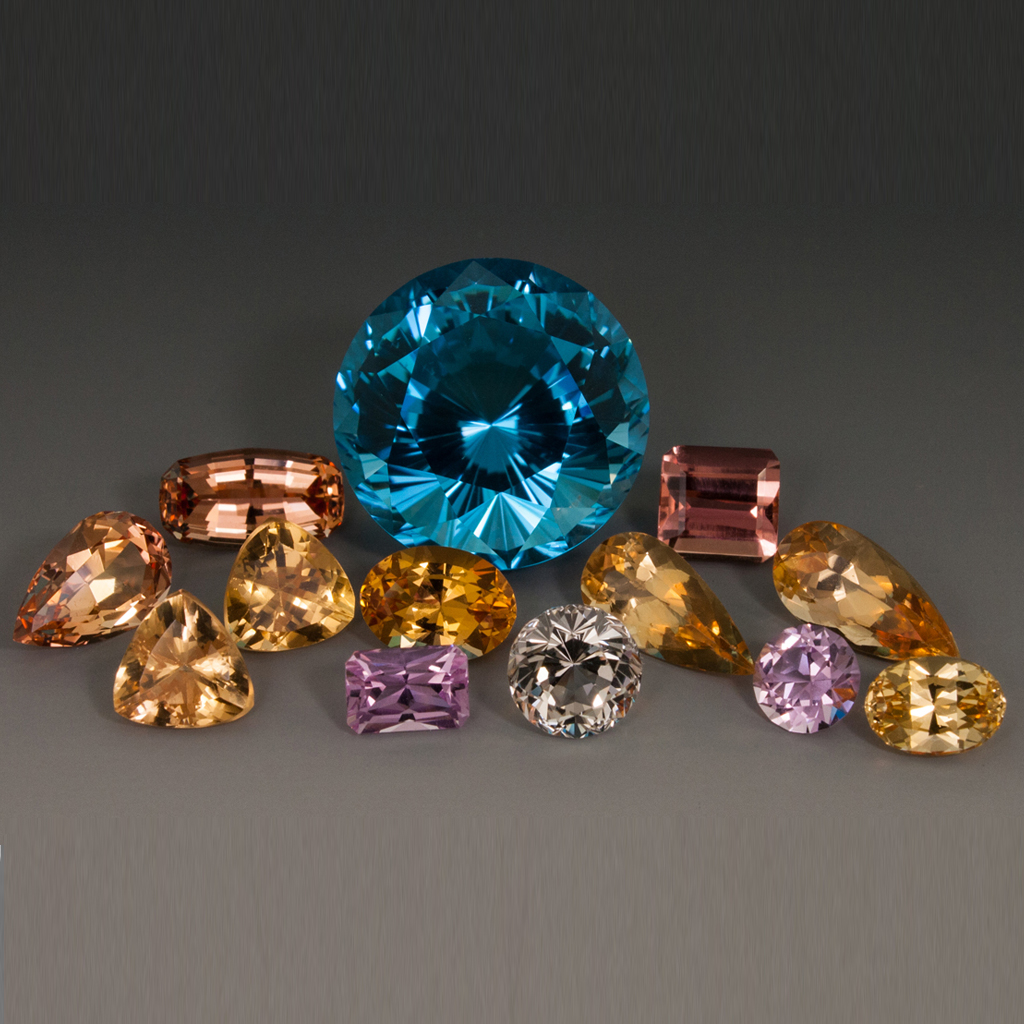
Topaz is November’s birthstone. It’s also an ideal gemstone for custom-designed jewelry given its brilliantly diverse colors and its hardness.
The name topaz comes from the Sanskrit word “tapaz”, meaning “heat” or “fire”. In ancient times, the Greeks believed that those who wore topaz possessed strength and invisibility. The Romans believed it improved eyesight. The Egyptians believed it protected against injury. During the Middle Ages, topaz was believed to be a healer of both physical and mental sicknesses and even able to prevent death.
In its natural state, topaz is golden brown to yellow. A variety of impurities and treatments may make topaz wine red, pale grey, reddish-orange, pale green or pink (rare) and opaque to translucent and even transparent.
The most sought after and consequently more valuable natural topaz is Imperial Topaz, alson known as “precious topaz”. The color of the setting sun (pink or pink-orange), the name arose with the Russian tsars of the 17th century who claimed their right to all the pink topaz mined in the Urals. The czars might take exception to the fact that today it’s the gemstone of Utah. They would also have to share mining locations with Brazil, one of the world’s largest producers of topaz.
Topaz is also the gemstone of another state, Texas, where it is found in the Precambrian granite of Macon County. For Texas, it’s blue topaz. Naturally occurring blue topaz is considered rare. Typically, to achieve blue, colorless, grey or pale yellow topaz is heat-treated.
Another topaz you might have heard of is Mystic Topaz. It is a colorless topaz artificially coated using a vapor deposition process to render a rainbow effect.
Topaz is 8 on the Mohs hardness scale. Given its relatively low index of refraction, do not expect large-faceted topaz to sparkle as readily as a diamond. Do expect it to be durable and lasting.


